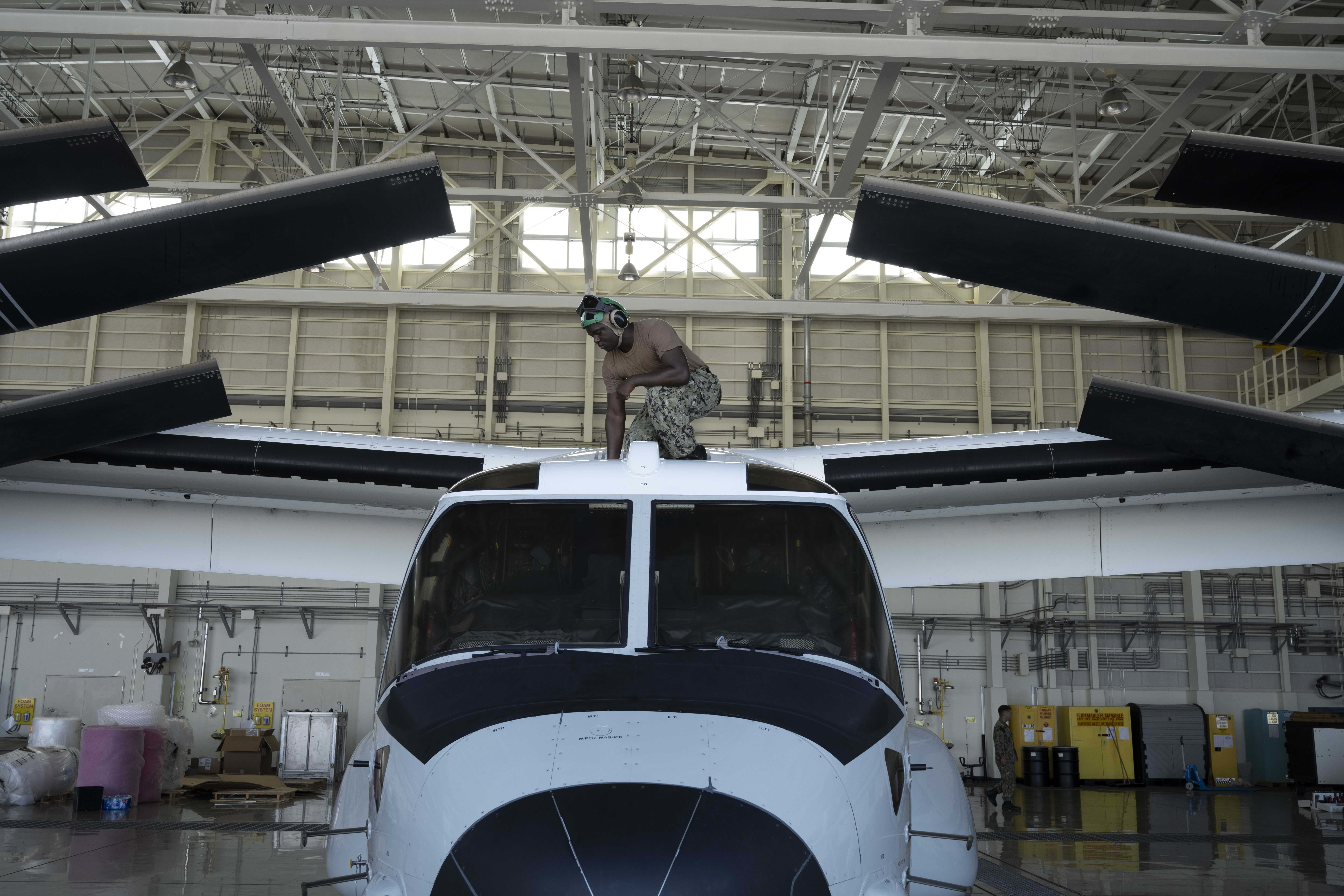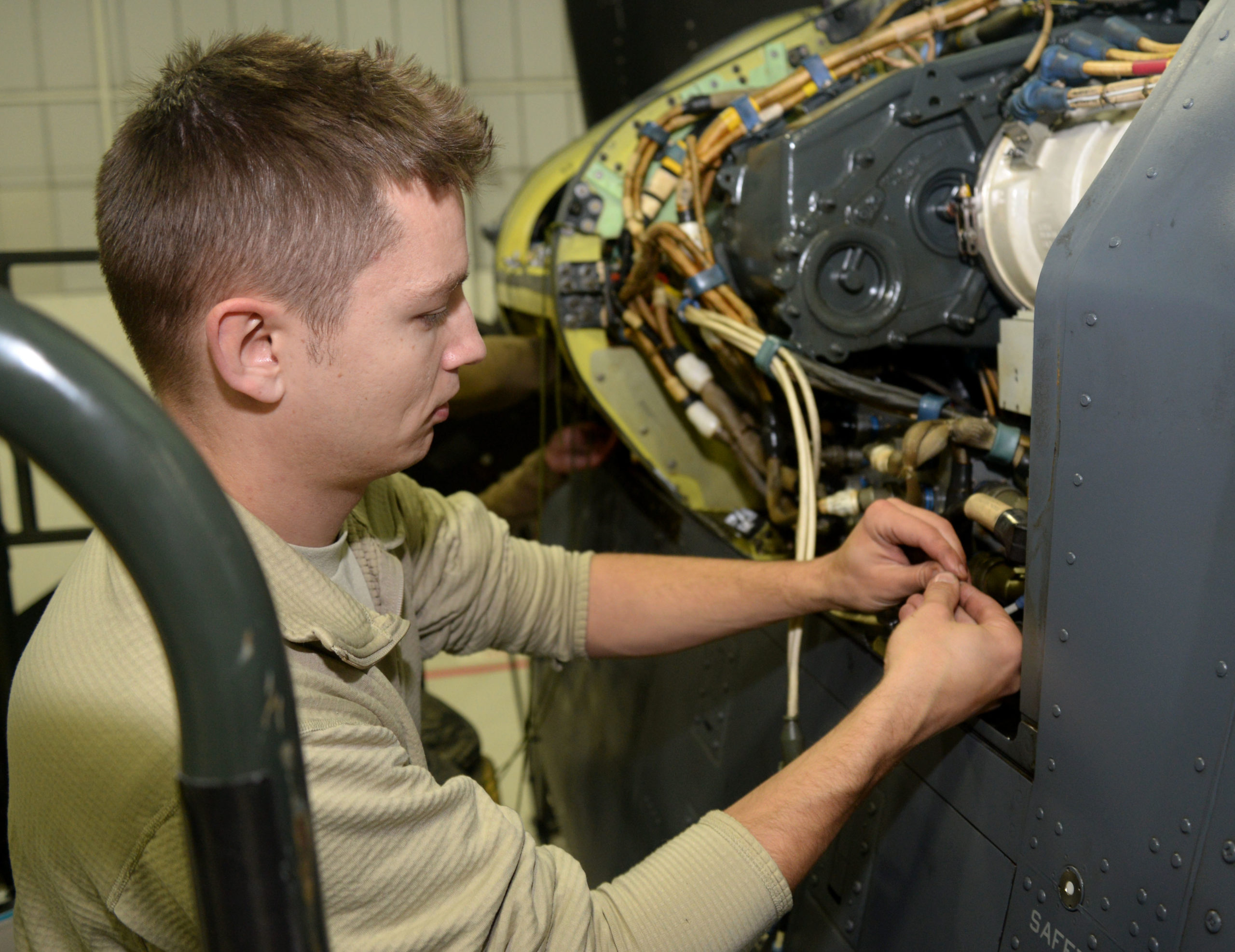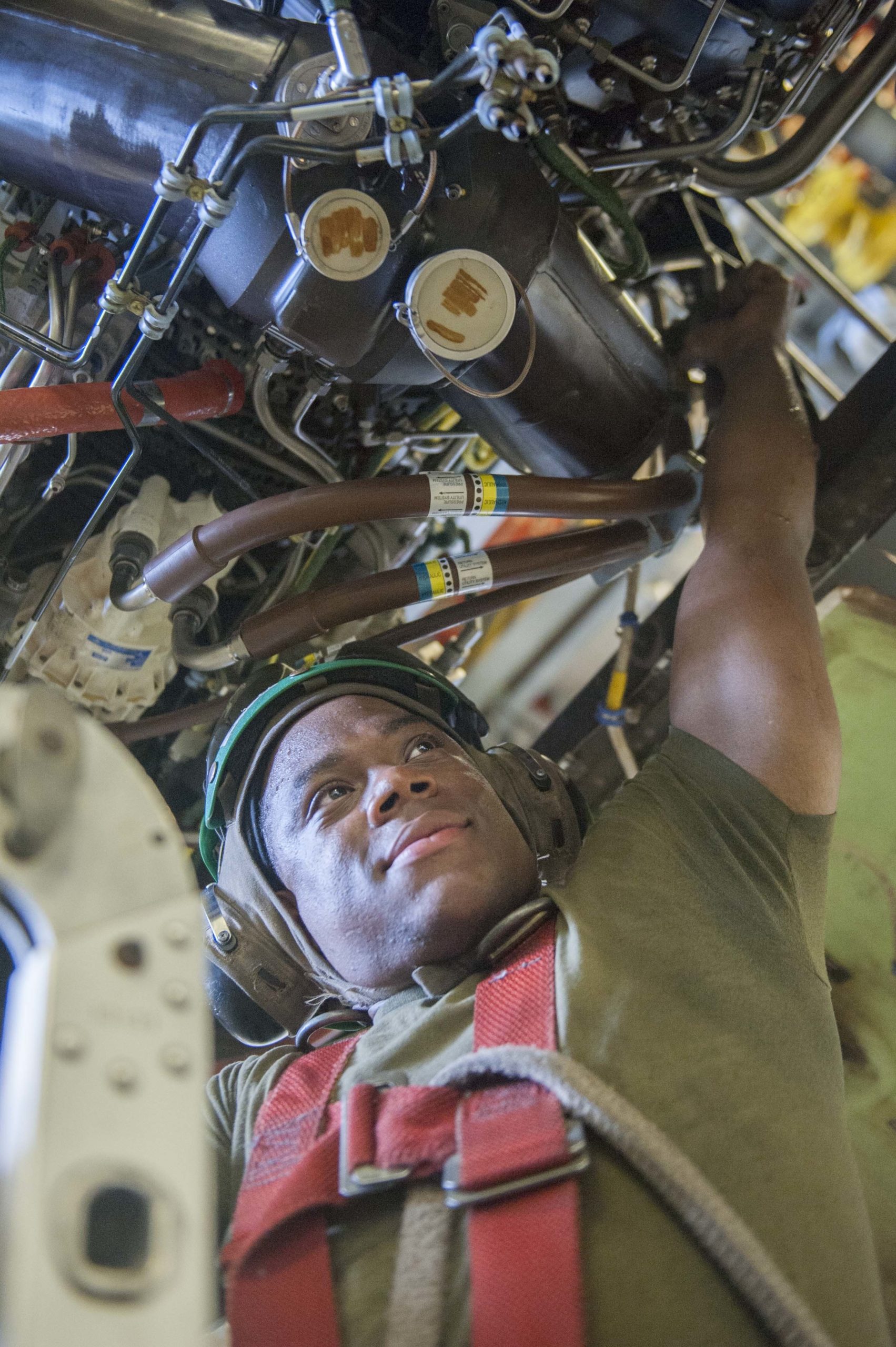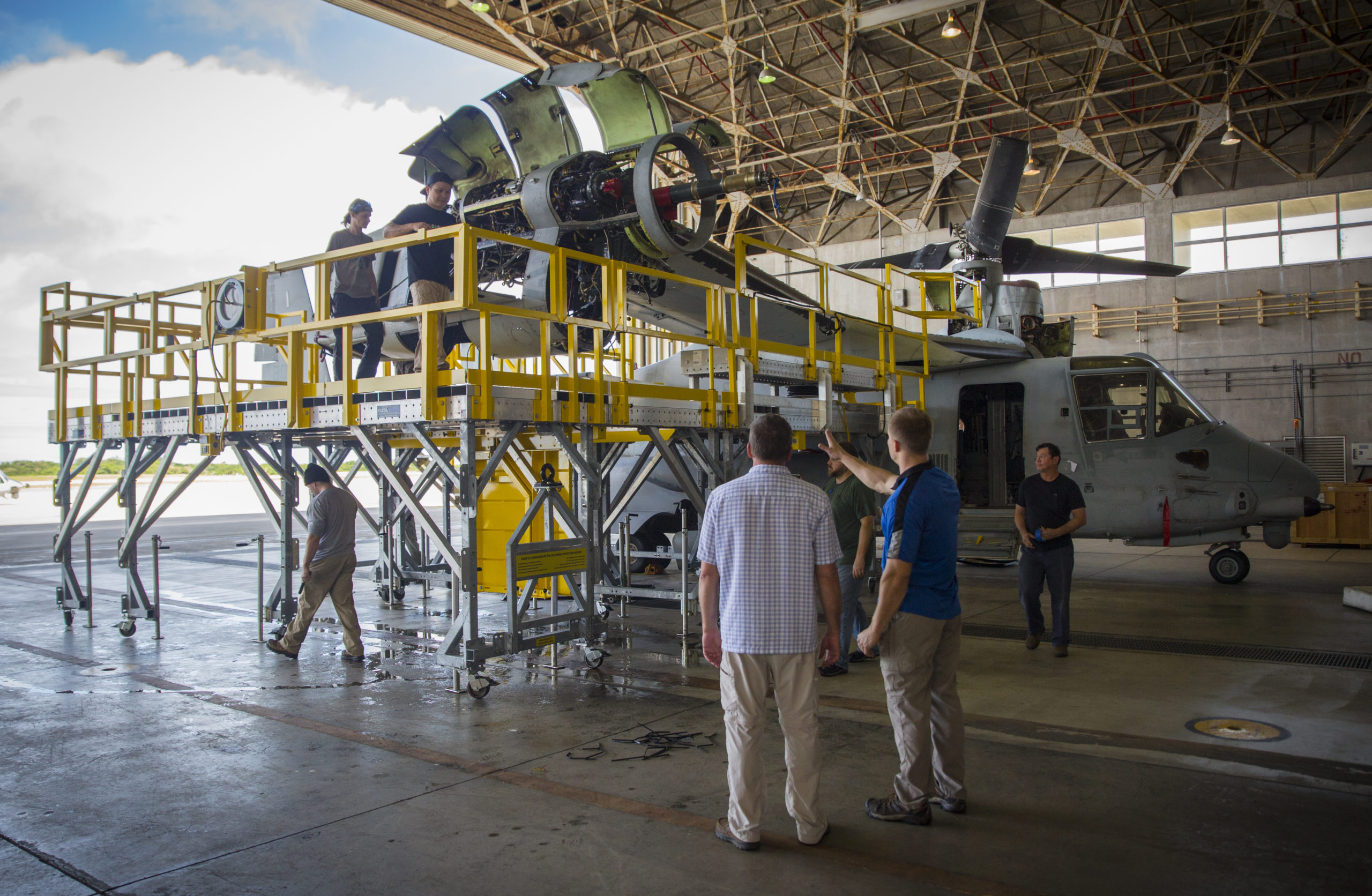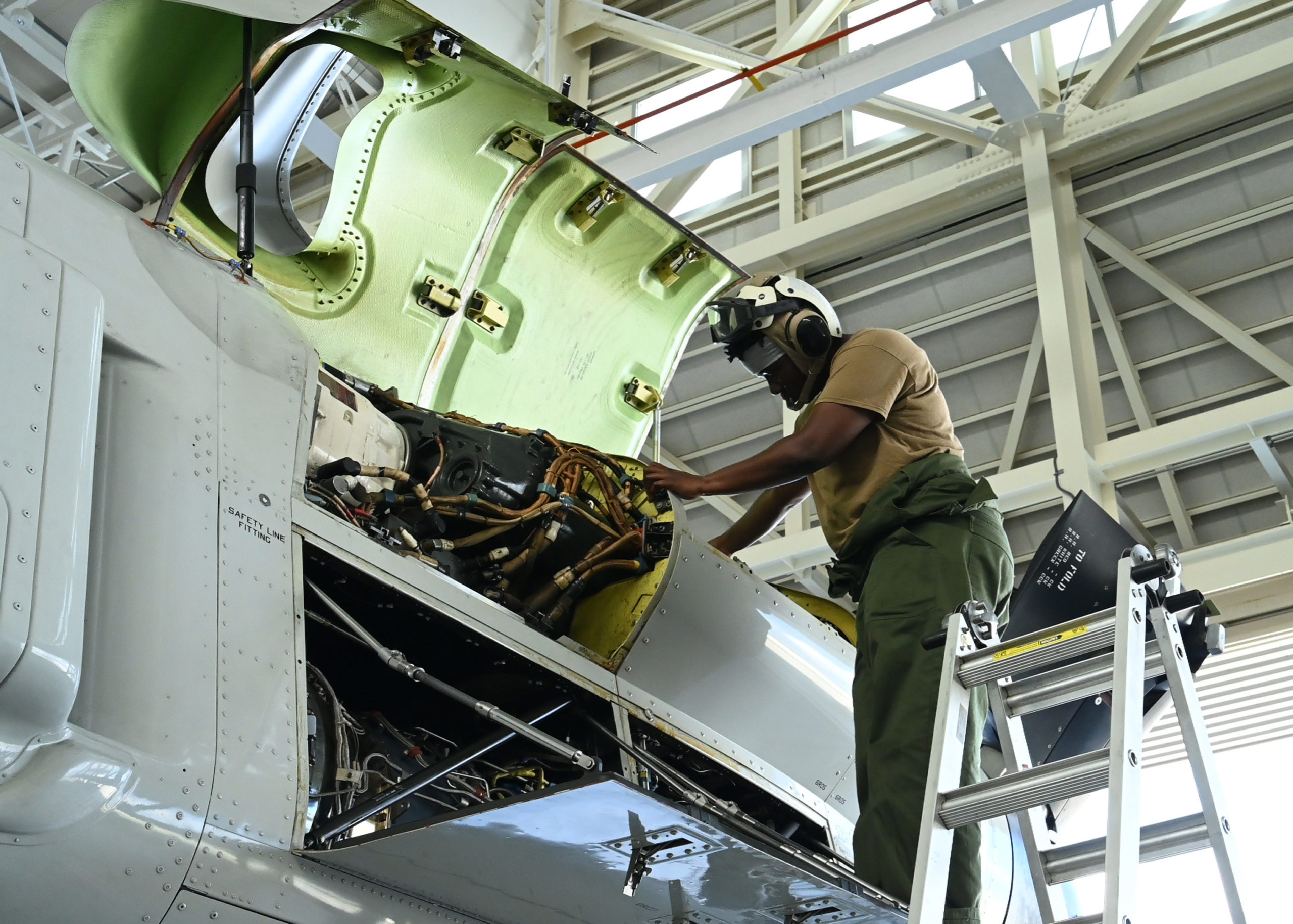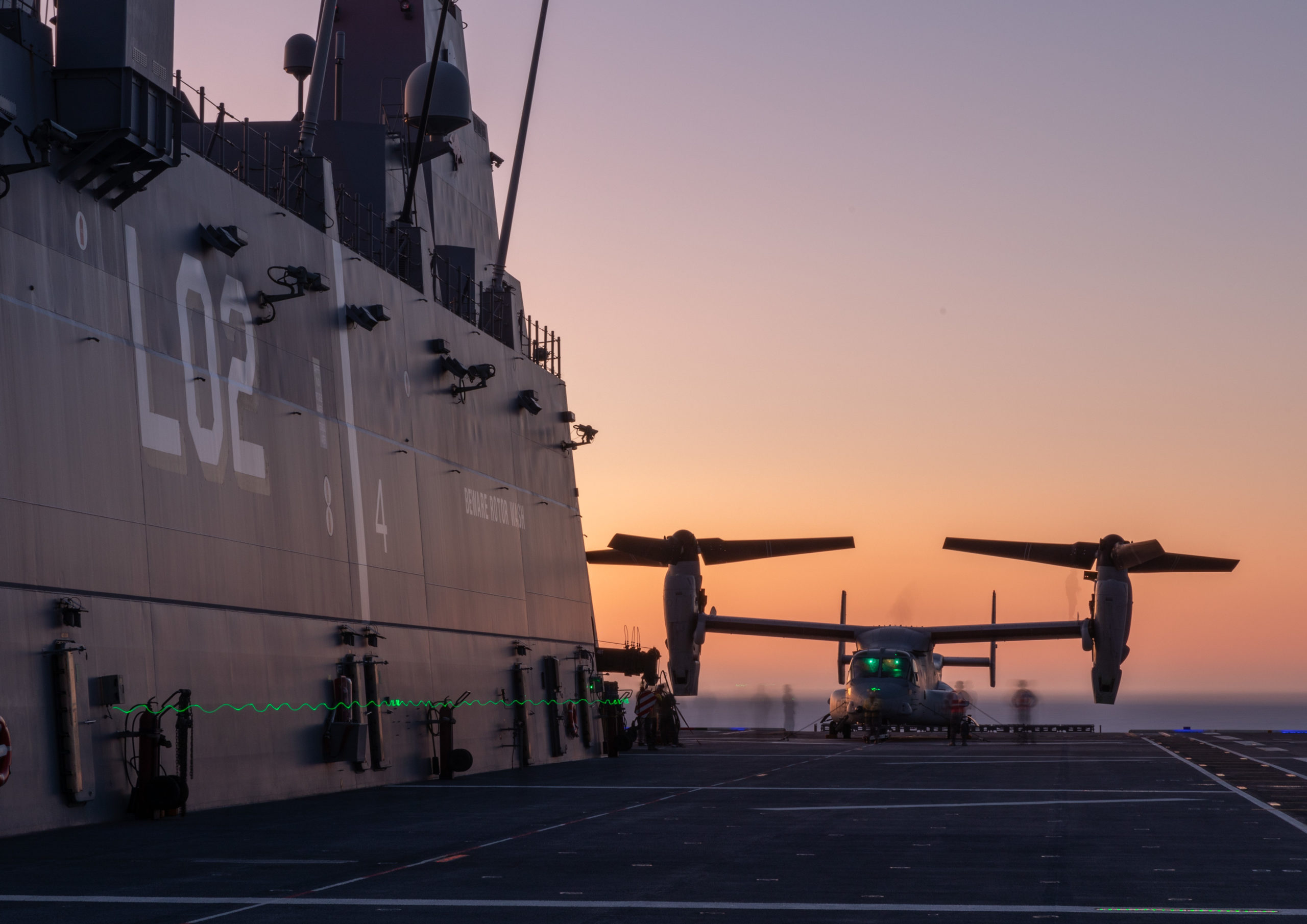By Robbin Laird
In my recent article on the CMV-22B coming to the carrier, I highlighted the importance of ramping up the CMV-22B buy to enable the kinds of support needed for a distributed fleet in a contested environment.
I also noted that “the synergies between the Navy and the USMC in this area are obvious, in terms of operating and maintenance knowledge.”
I want to focus on the sustainment side of the equation and the importance of having a fleet of aircraft ready for operations around the world, safely and quickly, when they are needed.
How do you sustain a fleet conducting forward operations but distributed across a vast battlespace?
Clearly, the need to deliver the necessary capabilities for sustained operations at the speed required is crucial; and this is where the transition from the C-2A to the CMV-22B will truly be a force multiplier.
I first dealt with Marine Corps Osprey maintainers during a visit to Marine Corps Air Station New River in 2010. That was 12 years ago, and the U.S. Navy has nearly two decades of Marine Corps experience to draw upon since the Marines began to operate the aircraft in 2007 in Iraq.
In an interview I did with Master Sgt. Jeremy Kirk during that 2010 visit, he underscored what he saw as a challenge for the Marines in maintaining the aircraft. I asked him the differences between maintaining the H-46, (the legacy aircraft known as the “Phrog”) and the Osprey: “There are differences. One of the biggest differences is the lack of experienced maintainers for the V-22. With the “Phrog” being around for so long, we have decades of experience in the minds of the maintainers. We are still learning the V-22. You have younger Marines and a new aircraft.”
The Osprey is a digital aircraft and the Marines working with their first digital aircraft was a key part of the transition. With the Navy now operating the aircraft, there is a “ground-hog-day” experience where the Navy needs to learn that a tiltrotor aircraft is neither a rotorcraft nor airplane; it is a hybrid with unique contributions to make to the warfighting enterprise.
One Marine Corps officer I interviewed during the Osprey transition’s early days was Colonel Chris “Mongo” Seymour.
In a meeting I had with him during his last week of service at New River before retirement in 2013, he noted: “There are several streams of activity which need to align to get the new system up and running and integrated into operations. He spoke in detail about one which was getting the Marines committed to owning the system and learning how to fix “new” problems, which come up with a new system. The challenges are different and must be worked differently. You need to get the maintainers to change their culture.
“Sorting out problems with the gearbox is a good example of what needed to be done. The gearbox on this airplane is very complex and central to its unique operational capabilities. The gearbox inside the nacelle turns a rotor, and they were chipping. This is high-end engineering. But when it was chipping, maintainers put it aside and waited for a new part. This meant the fleet was going to be degraded.
“The flight line needed to take ownership of the problem because a lot of it was self-inflicted. Maintainers would look to blame someone else when they had a proprotor gearbox go bad. As it turns out, the technology required was to use isotropic oil that absorbs moisture out of the air, so if you have a gearbox that’s not turning and boiling the oil out on a regular basis, it goes long term down. It’s sucking in the moisture of the North Carolina Coast into the oil.
“And the maintainers would leave it out on the flight line all opened just breathing the air, and then when they finally got a part or piece, they try to fire it up and another gearbox would chip, or another problem would manifest itself someplace else. It was an endless loop. We took some ownership here on flight line, shaped better maintenance practices, and helped industry.
“Once we got that proprotor gearbox moving back out of the red into the black, the internal culture of the community changed to become significantly more optimistic. The maintenance man-hours required to change a proprotor gearbox initially was estimated at 1800 maintenance man-hours. We’re doing it now in about 380. That’s how good we got at it.”
Recently, I turned to “Mongo” again to discuss the challenges and opportunities posed by the U.S. Navy now buying into the Osprey capabilities to support the carrier and the fleet. He is now in charge of sustainment at Bell, and we picked back up from our earlier interview.
He highlighted that while the Marines have significant experience in sustaining the aircraft, the Navy has its own learning curve, just as did the Marines earlier.
“It is sort of a ‘ground-hog-day.’ The Navy maintainers are generationally detached from the innovations of the past two decades of Marine Corps operations and development. But they are inheriting more than 20 years of operational experience and are building from that forward with specific U.S. Navy operational demands associated with the large deck carrier and then with the fleet.”
He pointed out that the Navy’s acquisition of the Osprey meant the Navy was taking ownership of the aircraft and making it a naval aircraft instead of a unique Marine Corps platform. This meant the Navy was activating its naval sustainment enterprise and would focus on the demand side of the fleet regarding the sustainment effort.
Seymour pointed out that both services benefit from Navy ownership of the platform; the Marines will benefit from Naval ownership and the focus on support from the naval enterprise, while the Navy will benefit from the established global sustainment capabilities and parts distribution points supporting USMC operations.
The Marines have an established infrastructure for supply and intermediate and depot-level repairs throughout the United States, as well as forward bases in Okinawa, Hawaii, in addition to facilities at RAF Mildenhall in the UK and Yokota Japan for the USAF variant of the aircraft (which is highlighted in the photos in the slideshow at the end of this article).
There is a significant opportunity for change concerning the sustainment approach driven by the Navy’s aircraft acquisition.
The Osprey’s complete integration into the Navy’s sustainment enterprise provides an opportunity to build an Osprey focused aggressive performance-based logistics approach. The Navy does this with the Seahawk helicopter and is in the throes of establishing a major F-35 Performance Based Logistics (PBL) contract for both the Marines and Navy.
Currently, the Navy manages most of the 1,600 to 1,700 repairable parts that make up an Osprey. The co-prime contractors on the program – Bell Boeing – manage nearly 20% of these parts. The shift to a PBL would allow the co-primes to better manage the supply chain, the parts distribution and the readiness and reliability of the parts and bring down the cost per flight hour.
The speed of delivery to the fleet – not merely as a narrowly defined COD replacement – makes the V-22 an asset that can deliver supplies with the relevant speed in a contested battlespace. The Navy’s challenge of managing many parts by contracting with many suppliers slows the ability to keep that fleet operational at the readiness levels desired.
A shift to a comprehensive PBL would empower Bell Boeing to drive change where rapid operations might expose a need to re-design parts. Under the PBL construct, the cumbersome process required to redesign parts is streamlined. Instead, this would be done in a timely fashion in partnership between government and the Osprey OEM.
The co-primes with the current PBL contract are in the high 90 percentile regarding material availability for the 228 parts for which they are responsible. These are the key parts that I discussed with “Mongo” 10 years ago. “What has been exposed then is how a wide number of low technologies, low cost and low complexity parts for the aircraft which the Navy is directly managing are not as readily available for the fleet when they need them.”
And because the predictable trajectory for the CMV-22B is to provide fleet support in its point-to-point sustainment roles, significant enhancement in fleet readiness is a key element of getting the kind of enhanced performance for the fleet as an integrated combat force.
The Navy has demonstrated in other programs its confidence and competence in working PBLs with industry. This benefit can also be extended for Osprey fleet readiness.
The defense industrial base is strained even in the face of the conflict with Ukraine.
For a Naval force with high demand in contested operations, this should indicate what is needed: a shift from a peacetime mindset to one in which significant global operations and conflict is becoming a distinct possibility.
We need a wartime approach to sustainment, not a “just-in-time” one. The speed of delivery to the fleet – not merely as a narrowly defined COD replacement – makes the CMV-22 an asset that can deliver supplies with the relevant speed, range and operational flexibility in a contested battlespace.
During its first two global deployments with 7th fleet, the CMV-22 demonstrated a remarkable positive impact on carrier battle group operations and readiness. To prepare for future maritime operations in a contested environment and take full advantage of Naval Aviation’s Osprey force: (1) lessons learned must be shared between Navy and Marine Corps users; (2) a robust PBL must be developed; and (3) serious consideration must be given to increasing the CMV-22 program of record so that the entire Joint Force Maritime Component benefits from this game changing capability.


